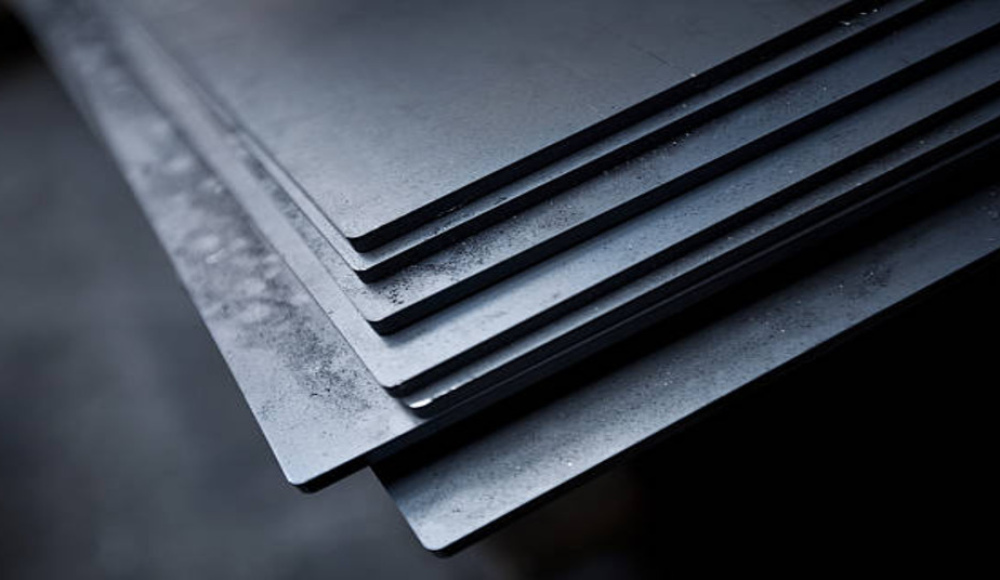金属加工において, チタンとスチールは一定の利点をもたらします. その驚くべき化学的および物理的特性により、, さまざまな分野に適しています. チタンとスチールの間の議論は理解する上で極めて重要です. 最も経験豊富な専門家であっても、これらの金属のどれを使用するかを決定するのは困惑することがあります。. したがって、それぞれに特有の特徴を知ることが重要です.
チタンとは?
チタン 密度が低く、強度が高い. 耐久性を高めるのに最適な耐食性. さらに, チタンは高温での使用に価値がある. それはより高いものを伴うので、 融点. チタンは、現在市場で使用されている他の金属と比較して最も新しい金属の一つです。. しかし, 結晶構造に欠陥があり、炭素などの混合物が含まれています。, 窒素, そして酸素. 化学的に最も純粋な試薬の形態, ヨウ化チタン, 以下の不純物が含まれています 0.1%. 加えて, 成形性、加工性に優れた素材です. 残念ながら, 純チタンは強度が低い. チタン合金はチタンに他の金属を加えて製造されます。. これらの合金, アメリカ発祥の. 約 60 何年も前に, 航空宇宙や医療の用途に使用されています.
鋼とは?
鋼鉄 鉄で構成されています, 炭素, およびその他の要素. さまざまな製造環境の多くの用途で優れた強度と耐久性を提供します。. 含まれる炭素により靭性と耐摩耗性が向上します。. 靭性や耐食性などの多くの特性は、合金元素によって影響されます。. 鋼は炭素として分類できます, 合金, および工具鋼. 非多孔質の表面を備えています. 加えて, 材料を扱うとかなり密度が高いように見えます. 工事, 自動車製造, および他の産業では、その優れた強度と延性により鋼が利用されています。.
チタン vs. 鋼鉄: 8 つの大きな違い
チタンかスチールで迷ったら, その場合、選択は 2 つを何に使用するかによって決まります。. コストを考えるとスチールの方が適切かもしれません, 一方、チタンは高性能のニーズに最適かもしれません. 以下は、これらの金属間の 8 つの主な違いの比較です。.
1. 元素組成
チタンは、純粋な形で金属として存在する遷移元素です。, そしてティとして 6-4, 含まれています アルミニウム バナジウムと. 一方で, 鋼は、特定の要件を満たすために鉄と炭素を他の元素と混合して製造される材料です. 後で説明するように, 鋼の特性は合金が異なると一定ではありません.
2. 重さ
チタンは軽量であるだけでなく、強度対重量比が高いことで有名です。. このため、航空宇宙などの業界では一般的な選択肢となっており、それを理解する必要があります。. 鋼鉄, それにもかかわらず, アルミニウムよりも強度はありますが、重いため、重量を重視した設計には理想的ではありません。.
3. 硬度
二人の中には, スチールはチタンより硬い. これが鋼の機械加工が容易な理由です. チタンは加工が難しいのはこのためです, しかし、その合金は材料の硬度が低いため、硬度が増加する可能性があります。.
4. 弾性
一般的に, スチールはチタンよりも弾性が高い. 弾性があるという事実は、その機械加工性を向上させ、製品の製造において最も重要です。. チタンは弾性も比較的低いため、作業が少し複雑になります。.
5. 耐久性
どちらの金属も強いですが、チタンは耐腐食性と温度耐久性においてはるかに優れています。. 一般的に, 鋼はさまざまな状況下で高いパフォーマンスを発揮します, しかし、鉄分が含まれているため、, 材料は錆びないわけではありません. チタンはその高腐食性の性質により、過酷な条件下での使用に非常に適していることがわかっています。.
6. 引張降伏強さ
チタンは高い強度/重量比を提供し、, そのような, 重量を重視するアプリケーションに役立ちます. まだ, 要求の厳しい用途では、全体的な強度の点でアルミニウムよりも強いスチールが好まれる場合があります。.
7. 一般的なアプリケーション
チタンは主に航空宇宙用途で使用されます, 手術, モータースポーツと. 高い引張強度を持っています, 優れた耐腐食性, 高性能操作に適した適度な熱伝導率. 鋼鉄, 一方で, 建設に使用されています, 製造業, 柔軟性と手頃な価格により、自動車産業に最適です。.
8. 価格
チタンは融点が高く加工が難しいため、鋼よりも高価です. 鉄の入手可能性と比較的単純な製造技術により、鋼ははるかに安価です。. 鋼の価格は合金によって異なり、より高価な種類にはクロムやチタンなどがあります。.
この情報は、プロジェクトに取り組む際に使用する適切な材料を選択するために不可欠です。.
チタンを使用する場合?
チタンは、強度と重量の比が重要な場合に使用するのに最も適した材料の 1 つです。, 腐食, 生体適合性が最も重要です. 高い強度対重量比のため, 重量が重要な要素であり、性能を犠牲にすることができない航空宇宙産業で広く使用されています。. また, チタンは身体組織と完全に適合するため、インプラントや手術器具などの医療機器に使用されています。. チタンは、関連機器が温度変動や過酷な条件にさらされる用途でも優れた性能を発揮し、その安定性が維持されます。.
スチールを採用する時期?
予算を優先する場合はスチールを選択することになります. チタンと比較すると, 鋼材は比較的安価です. 鋼は機械加工が容易なため、加工コストも低くなります。, 材料は特定の要件に合わせて幅広い合金で利用可能です. 鋼材は材料コストが比較的安いため、建設業界でよく使用されます。, 自動車産業, 耐久性と強度に優れているため、機械製造業に最適です。. 鋼は良好な機械的特性を示しますが、, 生体適合性がなく、航空機の構造に使用されるアルミニウム合金よりも重いため、医療や航空宇宙用途には使用できません。.
チタン vs. 鋼鉄: アプリケーション
チタンは強度が高い素材とも言えます。, 優れた断面重量比と優れた耐食性. しかし, チタンは鋼に比べて加工が困難であり、これは材料が切断しにくいためです。.
チタンを使用できる場所?
- 航空宇宙: チタンは航空機で最もよく使用されています, ヘリコプター, そしてミサイル, したがって、ブラケットやフレーム、その他の同様の構造に使用されます。.
- 自動車: 今日の自動車にはチタンが数多く使用されていますが、最も一般的なのは排気システムです。, バンパー, ブレーキローターなどもいくつか挙げておきます.
- 医学: チタンは無毒で人体に悪影響を及ぼさないため、人工股関節や膝関節などのインプラントやペースメーカーのケーシングに使用するのに最適な素材です。.
- 産業用: 耐食性に優れているため、熱交換器などの産業用機器に使用されています。, 化学処理, とバルブ.
スティールできる場所?
鋼鉄, 一方で, かなり錆びにくい, 着る, 腐食とこのため, あらゆる製造分野で活用されています.
- キッチン用品: 調理器の製造に鋼が使用されるのはこのためです, カトラリー, 強度に優れているため、キッチンに必要なその他の器具も収納できます。.
- 工業薬品: その性質上、, 鋼は配管工事に最適です, 自動車製造, 医療機器の製造においても.
- 工事: 建物や芸術的な建造物の外装には、耐久性に優れ、見た目にも優れた鋼材が使用されています。.
- 自動車: 車の中, エキゾーストにはスチール製パーツを使用, ラジエーター, 延性があり、腐食しにくいため、その他の用途にも適しています。.
あなたのプロジェクトに最適な金属はどれですか?
しかし, チタンは、進行中のプロジェクトに応じてスチールと同じ意味で使用されます. この 2 つを採用する前に、特定の要素を考慮することが重要です. これらには材料の強度も含まれます, 処理する能力, 環境との適合性.
チタンは鋼と同等の強度を持ち、錆びない、軽い素材を求める方に最適です。. このような理由から, 理想的です, 特に表面の強度が最も重要な懸念事項である航空宇宙および医療用途では.
チタンは比較的高価ですが、, 鋼材は比較的安い. さらに, チタンよりも加工や成形が容易で、切断も容易です。. また, 鋼には、要求される特性に応じて製造される合金があります。, 例えば, 耐食性または高張力.
最後に, スチールとチタンのどちらを選択するかは、念頭に置いているプロジェクトによって決まります。.
チタンおよび鋼の精密加工用コンタクトトップ
鋼またはチタンの正確な機械加工要件に対応, 精度の高いトップ あなたにぴったりのパートナーです. 当社は、スチールやチタンに最先端の CNC 加工法を採用した、精密で複雑なコンポーネントの製造を専門としています。.
当社の専門スタッフは、航空宇宙を含むさまざまな業界向けの高品質部品の生産を保証します。, 自動車, 医学, そして産業用. スルートップ最高精度, 高い精度が得られます, 低い公差, 最適な表面仕上げ.
今すぐお電話ください 次の鋼またはチタン部品の加工作業で当社のサービスからどのようにメリットを得ることができるかを知るには!



